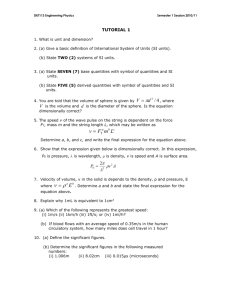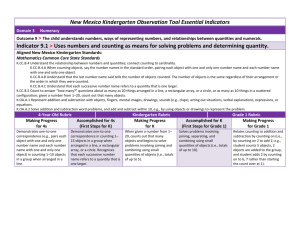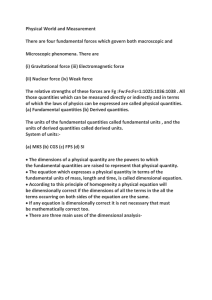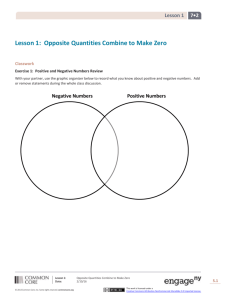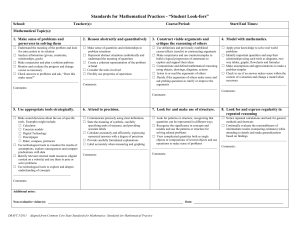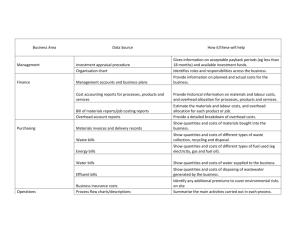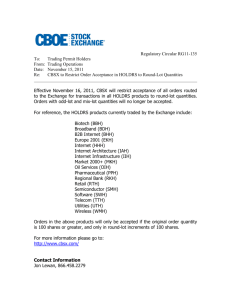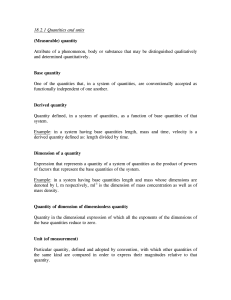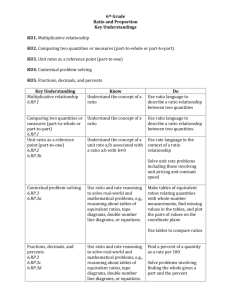Number and Numeration: The Big Ideas and Essential Understandings
advertisement
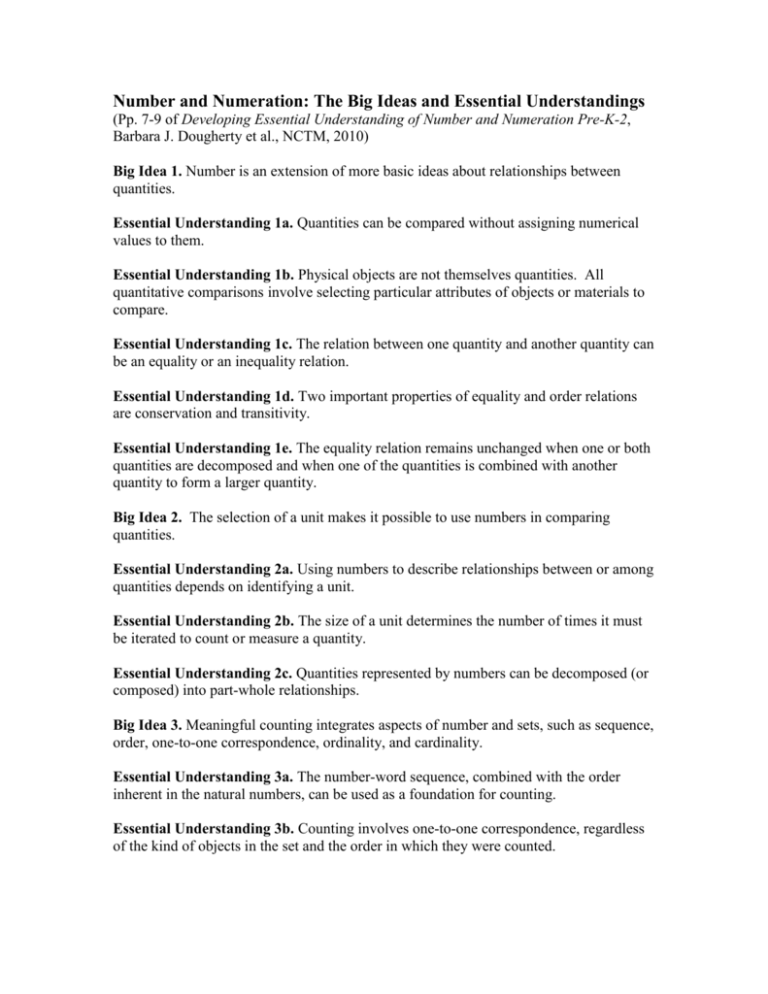
Number and Numeration: The Big Ideas and Essential Understandings (Pp. 7-9 of Developing Essential Understanding of Number and Numeration Pre-K-2, Barbara J. Dougherty et al., NCTM, 2010) Big Idea 1. Number is an extension of more basic ideas about relationships between quantities. Essential Understanding 1a. Quantities can be compared without assigning numerical values to them. Essential Understanding 1b. Physical objects are not themselves quantities. All quantitative comparisons involve selecting particular attributes of objects or materials to compare. Essential Understanding 1c. The relation between one quantity and another quantity can be an equality or an inequality relation. Essential Understanding 1d. Two important properties of equality and order relations are conservation and transitivity. Essential Understanding 1e. The equality relation remains unchanged when one or both quantities are decomposed and when one of the quantities is combined with another quantity to form a larger quantity. Big Idea 2. The selection of a unit makes it possible to use numbers in comparing quantities. Essential Understanding 2a. Using numbers to describe relationships between or among quantities depends on identifying a unit. Essential Understanding 2b. The size of a unit determines the number of times it must be iterated to count or measure a quantity. Essential Understanding 2c. Quantities represented by numbers can be decomposed (or composed) into part-whole relationships. Big Idea 3. Meaningful counting integrates aspects of number and sets, such as sequence, order, one-to-one correspondence, ordinality, and cardinality. Essential Understanding 3a. The number-word sequence, combined with the order inherent in the natural numbers, can be used as a foundation for counting. Essential Understanding 3b. Counting involves one-to-one correspondence, regardless of the kind of objects in the set and the order in which they were counted. Essential Understanding 3c. Counting includes cardinality and ordinality of sets of objects. Essential Understanding 3d. Counting strategies are based on order and hierarchical inclusion of numbers. Big Idea 4. Numbers are abstract objects. Essential Understanding 4a. Patterns in the number-word sequence provide a foundation for the abstract number concept. Essential Understanding 4b. The number sequence is infinite. Essential Understanding 4c. Number symbols are representations of abstract mental objects. Big Idea 5. A base-ten positional number system is an efficient way to represent numbers in writing. Essential Understanding 5a. Ten different digits can be used and sequenced to represent any whole number. Essential Understanding 5b. Our baase ten number system allows forming a new unit of ten of the previous place-value units, and this process can be iterated to obtain larger and larger place-value units. Essential Understanding 5c. The value of a digit in a written numeral dependds on its place, or position, in a number. Essential Understanding 5d. Inherent in a place value are units of different size.

